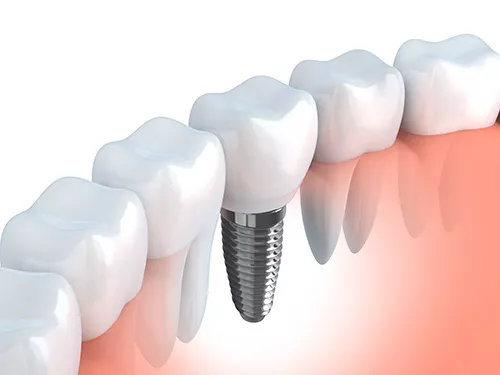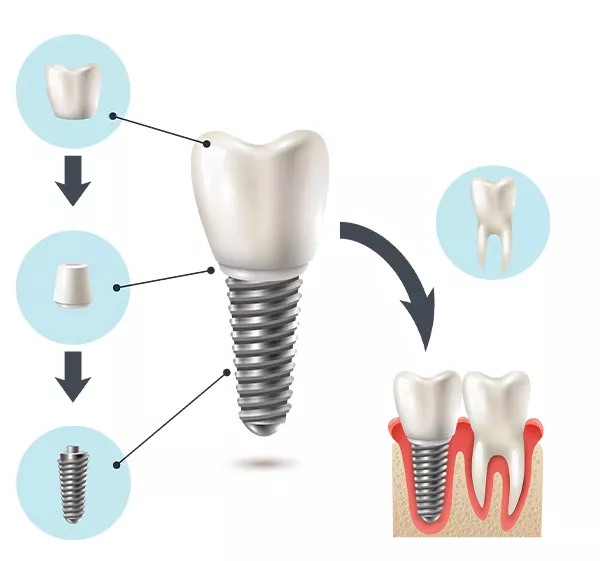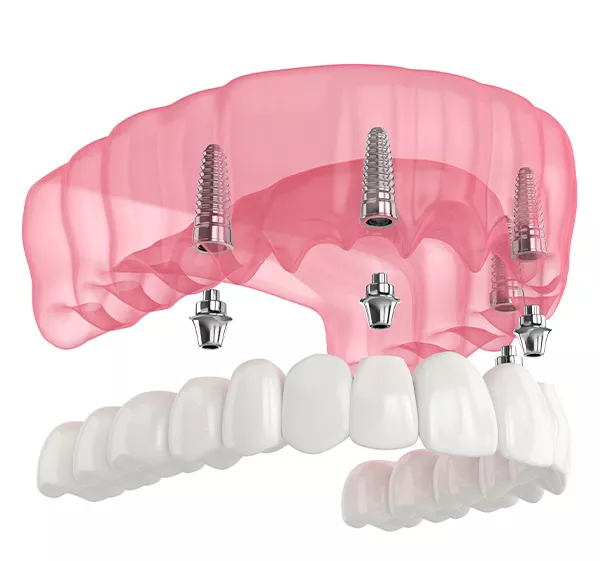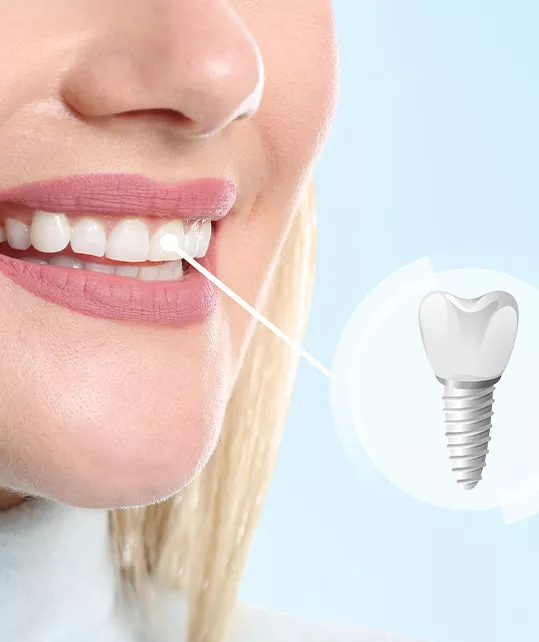Dental Implants – An Effective Solution for a Perfect Smile
Dental implants offer both aesthetic and functional benefits
If you’ve lost one or more teeth, there’s no need to worry that you’ll never be able to smile confidently again—revealing an unsightly gap in your jaw. Modern dentistry provides a simple and effective solution for tooth loss.
Of course, it’s possible to live without a tooth, but it’s far from ideal. Teeth adjacent to the gap lose their natural support and may begin to shift or tilt in the jaw as they seek a new point of contact. Once teeth have moved or become misaligned, it is no longer possible to correct the issue with a dental implant.
Shifted or tilted teeth often have exposed tooth necks, which can become sensitive and are more prone to tooth decay.

What Is a Dental Implant?
A dental implant functions as a replacement for the root of a missing or extracted tooth. It is typically made of titanium and other hypoallergenic materials and is shaped to mimic the root of a natural tooth. Essentially, it acts as an artificial tooth root onto which a new tooth can be placed.
The implant is inserted into the jawbone, which must first be carefully drilled to ensure a perfect fit. Thanks to modern local anesthesia techniques, the procedure is painless.
Once the implant is placed, the surrounding bone tissue gradually grows into the specially designed grooves on the implant’s surface, anchoring it firmly in place. This process is known as implant integration (osseointegration).

What Does a Dental Implant Look Like?
A dental implant consists of three parts:
- Implant – A screw that is inserted into a drilled hole in the jawbone
- Abutment – A connector that links the implant to the crown
- Crown – The visible replica of the missing tooth, made from ceramic material
You can imagine the dental implant process as similar to hanging a picture or shelf on a wall. First, you drill a hole into the wall (the jawbone), then insert a wall plug or hook (the abutment), and finally hang what you need (the ceramic crown).
There are many types of implants from various manufacturers, differing in shape, size, material, quality, price, and often the country of origin. The most commonly used dental implants today are cylindrical in shape, made from titanium, and come from reputable suppliers of dental prosthetics, bridges, and other tooth replacements.
With proper care, high-quality implants can last for several decades.

All-on-4 Dental Implants
All-on-4 and All-on-6 dental implant systems are treatment options for patients who are missing multiple teeth or even an entire dental arch. These systems use only four or six dental implants to support a full set of replacement teeth.
Both implant systems offer several advantages. Traditional dentures can be uncomfortable and unstable, but All-on-4 and All-on-6 systems use a fixed bridge that is securely anchored in place with implants. This means the replacement teeth do not shift in the mouth and function just like natural teeth.
They provide patients with a stable, non-removable solution for missing teeth, improving both function and the appearance of their smile. Additionally, they help preserve the remaining jawbone, prevent further bone loss, and maintain the natural shape of the face.

Benefits of Dental Implants
Missing teeth can be replaced in several ways. In the past, it was common to use a dental bridge. This procedure involves grinding down the adjacent teeth and placing a prosthetic over them. The disadvantage is that the ground teeth are permanently damaged and must bear part of the chewing pressure for the missing tooth.
A similar solution is a removable denture, often referred to as “false teeth.” This approach was typically used when several teeth were missing. The dentist would create a removable prosthesis to fill the gaps in the jaw. Although the denture can be taken out when needed (usually at night), many people find it uncomfortable to wear. Additionally, it can be difficult to keep the denture stable while chewing or speaking.
A more advanced solution is dental implants, which offer a wide range of benefits:
- Natural Appearance – Implants seamlessly restore your smile with a look that feels natural.
- Preservation of Surrounding Teeth – Unlike bridges, implants do not damage adjacent healthy teeth.
- Stability and Functionality – Implants function like natural teeth, providing strong support for chewing without shifting or putting pressure on neighboring teeth.
- Support for Surrounding Teeth – They prevent teeth from shifting or becoming misaligned.
- Comfort and Confidence – Dental implants integrate with your mouth as if they were your own teeth, with minimal risk of discomfort or complications.
Your Reviews
The purpose of our work is your health
and a naturally beautiful smile
Our Clinic’s Equipment
Experience 21st-Century Aesthetic Dentistry
At Clinic for Smile, you are cared for not only by highly trained specialists but also with the most advanced dental technology, including a 3D X-ray and an intraoral scanner.
Additionally, there’s no need to worry about excessive pain. When necessary, we use local anesthesia to make your procedure as comfortable as possible. Visit Clinic for Smile and experience 21st-century aesthetic dentistry.
Let us take care of you.





